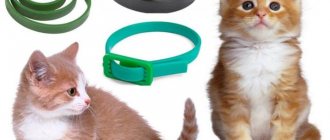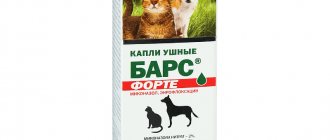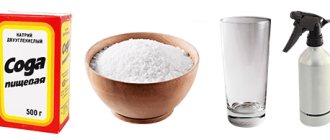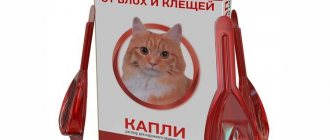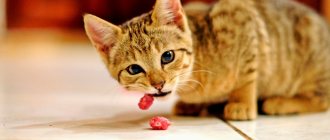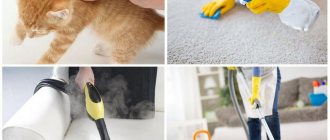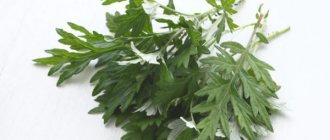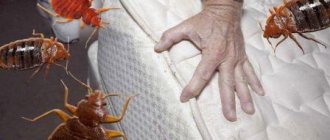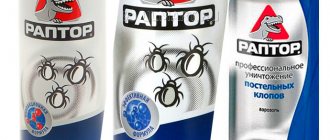- How does a cat get fleas? Routes of infection
- Signs of a cat having fleas
- The danger of fleas for animals
- Flea spray and drops
Several types of ectoparasites can live on a cat. Most often, fleas are found on a pet. In some cases, these blood-sucking insects appear on the skin of an animal, even when it is not walking outside . There are many ways to rid a cat of fleas at home; let’s look at the most popular ones.
Composition and release form
Forms of release of the drug:
- Celandine Maximum flea drops are a yellowish oily liquid packaged in 1 ml polymer pipettes. They are packed in cardboard boxes of 1–5 pieces. The main active ingredients included in the drops are fipronil and permethrin. Excipients: polyvinylpyrrolidone, propylene glycol, dimethyl sulfoxide.
- Spray Celandine. Available in bottles of 100, 150 and 200 ml. When applying the product to an animal’s fur, the spray is sprayed at a distance of 15–20 cm. Since the pet can be poisoned when licking the substance, it must be limited in movement until the end of treatment. Within 10 days, infection with ectoparasites is completely excluded.
Release form
- Zoosprey Celandine Maximum. The main components of the product are fipronil and pyriproxyfen. It goes on sale in 100 ml bottles. Can be used to kill fleas, ixodid ticks and treat sarcoptic mange. In the first case, treatment is carried out every month, and in the second - once a week.
- Zoo shampoo Celandine. The main active ingredient is permethrin. Available in bottles of 100, 150, 180 and 200 ml. Used for bathing animals to destroy ectoparasites. Treatment is carried out every 15 days.
- Shampoo Celandine Maximum. The main component is permethrin. Produced in bottles of 180 and 250 ml. After treatment, the product must be thoroughly rinsed off to prevent the animal from licking it. The frequency of use is determined by the veterinarian.
- Collar Celandine. The active ingredient is permethrin. Can be used for cats and dogs. It is a narrow tape made of polymer. Can only be used for animals that have reached the age of 4 months. The effectiveness of the collar depends on the type of ectoparasite against which it is used - ixodid ticks (3 months), fleas (4 months). Products are prohibited for use on pregnant and lactating pets.
- Collar Celandine Maximum . Products with lengths of 40, 50 and 65 cm are available for sale. Indications and contraindications are similar to the product of the Celandine brand.
- Collar Celandine Plus. The main component is diazinon. On sale you can find products with lengths of 35, 40 and 65 cm.
- Powder "Clandestine". A powdery substance whose active ingredient is permethrin. Packaged in packages of 50 and 100 mg. When processing, the powder must be applied in a thin layer and rubbed into the animal’s fur. After this, the pet should be combed with a comb.
For reference! Spray Celandine against fleas can be used when treating premises.
How to choose a flea treatment for cats
When buying medicine for blood suckers, you need to consider the following aspects:
- weight, age of the cat;
- packaging integrity;
- speed of impact;
- best before date;
- ease of application. Both the character of the furry predator and the skills of the owner are important here. For example, a person who does not know how to give injections is better off buying drops.
It is necessary to take into account the composition of the antiparasitic and its safety for a particular patient. The stronger the active ingredients, the greater the risk of poisoning. Species specificity is also important.
Yuri Lizvinsky Veterinarian, head of the training department of Apicenna LLC
Attention: formulations for dogs should not be applied to cats. This can lead to severe poisoning and death.
It is best to entrust the choice of antiparasitic to a veterinarian who can take into account all the nuances of the health condition, the individual characteristics of the body, and prescribe effective, safe medications.
Operating principle
The drug Celandine helps get rid of fleas, ixodid and ear mites in cats and dogs, destroys lice and nits. The main components of the product have the same effect on different forms of blood-sucking insects.
Shampoo application
The action of the drug is based on blocking electrical movements in synapses, which provokes paralysis and death of blood-sucking insects. All parasites are destroyed within two days.
The insecticidal components of the drug accumulate on the outer layer of the epithelium and wool. Thanks to this, the protective properties of the drops are maintained for 4–8 weeks. During this period, insects that accidentally fall on the animal’s fur die.
Since the components of the drug are not absorbed into the systemic circulation, the risk of side effects is minimal. The exception is situations in which the pet licks the medicine.
Composition of funds
Depending on the principle of action, anti-flea products are divided into:
- insecticides - contain toxic chemical compounds that destroy, but do not repel;
- repellents - do not get rid of existing “pests”, they prevent infection, preventing parasitism. The composition may include both synthetic substances and vegetable oils or extracts that are unpleasant for bloodsuckers.
The most effective are combined solutions that combine components of both groups.
Instructions for use for cats and dogs
Before starting to treat the animal, it is necessary to calculate the dosage. In this case, it is necessary to know the age and weight of the pet. For example, when treating cats, kittens and puppies, different numbers of drops of Celandine are needed. You also need to take into account the dosage form of the drug, since the features of the drug’s use depend on this.
Algorithm for applying Celandine drops to destroy blood-sucking insects and prevent their appearance:
- Break off or cut off the top of the medicine dropper.
- Gently part the animal's fur at the withers.
- Apply the product to the epithelium, avoiding places that the pet can lick.
Celandine flea spray is suitable for treating animal premises and bedding, but before allowing your pet near treated surfaces, you must wait until the insecticidal solution has dried.
To achieve greater effectiveness from the use of the drug, it is necessary to take into account some recommendations:
- If the medicinal solution is used to kill parasites, the treatment is carried out once. When the goal is to treat notoedrosis and sarcoptic mange, manipulations are repeated 2–4 times every 8–10 days.
- To prevent infection by ticks and fleas, the treatment is repeated every 2 months.
- In the first 24 hours, do not allow moisture to get on your pet's fur. Water reduces the effectiveness of the drug.
- Treatment must be systematically repeated to maintain the therapeutic effectiveness of the product.
Drops on the withers
If the drug is used to treat otodectosis, you need to clean the ears from dirt and drop 1-3 drops of the product into each ear canal. To completely cure the parasites, repeat the steps after 5 days.
Contraindications for use
Considering that celandine is a poisonous herbaceous crop, it is not worth feeding chickens, as already noted, with this plant. Experienced poultry farmers know well that chickens are omnivorous birds, and they are not averse to profiting from various herbs, including poisonous ones. This, in turn, can provoke acute diarrhea, vomiting, nausea, and intoxication of the body. Therefore, most farmers agree that celandine is the purest poison for poultry.
Advice! If poisonous plants and herbs grow in areas where chickens and chickens walk, be sure to uproot them.
At the same time, some poultry farmers believe that it is worth feeding chickens with various types of herbs, including celandine, but give the plant in small doses. Laying hens increase egg production. In addition, celandine improves appetite, has a pronounced antihelminthic effect, and helps improve immunity. The antihelminthic effect will increase if wormwood is fed to chickens along with celandine.
Being free-range, chickens themselves find useful plants and herbs
We can advise all poultry farmers who are interested in the question “Is it possible to give celandine to chickens?” don't go to extremes. This plant should not be added specifically to food. You can give laying hens and young birds a few sprigs of this herb, and then no more than once every three weeks. In addition, there are many useful plants and herbs for poultry that not only can, but also need to be added and mixed into feed.
Dosage of the drug
If Celandine is used against fleas for cats, then when treating pets weighing up to two kg, use ½ pipette, for animals with a larger body weight - the whole pipette.
For puppies and small breed dogs, the dosage is taken similarly to cats ; the dose for large breed dogs is calculated using the formula - 1 pipette for every 10 kg of weight.
If you plan to treat a pet's room or bedding, the amount of product used is calculated using the formula - 2 ml per 1 m2 of room. When spraying the spray, the dosage is 0.5 ml over a similar area.
Contraindications and possible side effects
According to the instructions for use, the restrictions for the use of Celandine drops against fleas and ticks are:
- animal weight less than 500 g;
- the period of bearing and feeding offspring;
- age up to two months;
- weakness and exhaustion.
The drug should be used with caution in animals with renal or hepatic insufficiency. Before processing, you should consult a specialist.
Possible side effects:
- increased salivation;
- systematic release of tear fluid;
- indigestion;
- itching or hyperemia of the skin in the treatment area;
- apathy;
- lack of appetite.
To prevent the development of negative consequences, you must adhere to some rules:
- If you plan to treat several animals at once, you should prevent them from licking each other. It is better to lock your pets in different rooms.
- The combined use of different forms of insecticidal agents - collars, powder, etc. is prohibited.
Precautionary measures
Celandine is considered a rather dangerous product because it contains components that can cause poisoning. To avoid intoxication, you should follow some recommendations:
- Before you start using the drug, you must wear rubber gloves.
- On the first day, it is better to avoid direct contact with your pet. You should also limit children’s contact with animals for 2–3 days.
- When carrying out manipulations, a person should stop smoking, drinking food and liquids. This will help prevent the drug from entering the body.
- After contact with the medicinal solution, hands should be washed with soap under running water and treated with an antiseptic.
- After processing, pipettes should be discarded.
Hand washing
Properties of celandine
Celandine is an inconspicuous, unpretentious weed that grows everywhere. As already noted, it refers to poisonous plants. It contains about 20 alkaloids, which in case of overdose can be called the purest poison for the body of birds.
In addition, celandine contains vitamin C, carotene, organic acids (succinic, citric, malic), biologically active compounds, essential oils, flavonoids, saponins, tannins. As a rule, all of the listed substances have healing properties to one degree or another, but mostly only when used externally.
Important! In alternative medicine, celandine juice is taken orally to treat many diseases and pathologies. For example, decoctions and mixtures based on this plant are used in gynecology, in the treatment of dermatological problems, and pathologies of the digestive tract.
Indeed, celandine is beneficial for the human body. But for poultry and animals it has the opposite effect. In case of overdose, the alkaloids contained in celandine can cause muscle spasms, cramps, and provoke intoxication.
Advantages and disadvantages
Advantages of using Celandine for cats and dogs:
- large selection of different release forms;
- simple dosage calculation;
- high efficiency in destroying parasites of various types;
- long action;
- low price;
- no problems with purchasing.
Minuses:
- the risk of developing allergies in an animal or person;
- high toxicity;
- a large number of contraindications and restrictions based on body weight and age.
Signs of fleas, ticks and lice in chickens
Symptoms of infection increase gradually; in the initial stages it is quite difficult to notice the problem. As the parasites multiply, the following signs of damage appear:
- nervousness;
- plucking your own feathers;
- lethargy;
- traces of pecking, wounds on the skin;
- cough;
- loss of appetite, weight loss;
- irritation;
- sleep disorders;
- serous discharge from the eyes;
- decreased egg production;
- growth retardation in chickens;
- baldness;
- damage to the bases of the feather rods.
Chickens are reluctant to return to the poultry house in the evenings and stop using their usual nesting sites. In the worst case scenario, the young animals begin to die.
Some parasites can be noticed during examination of the bird. Ticks are often visible on the paws and other exposed areas of the body. Lice and fleas hide under the wings, near the anus, on the neck.
